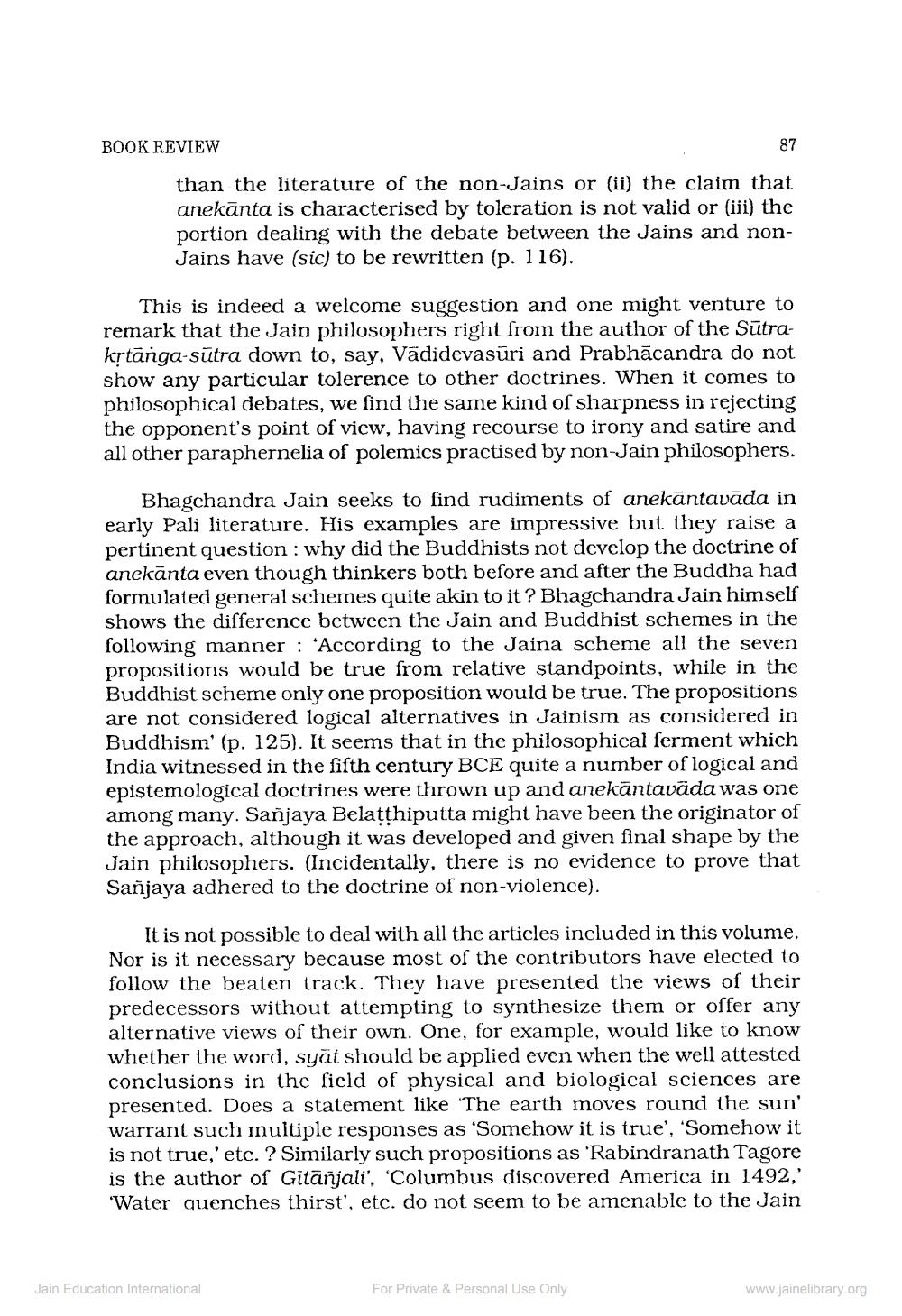________________
BOOK REVIEW
than the literature of the non-Jains or (ii) the claim that anekānta is characterised by toleration is not valid or (iii) the portion dealing with the debate between the Jains and nonJains have (sic) to be rewritten (p. 116).
This is indeed a welcome suggestion and one might venture to remark that the Jain philosophers right from the author of the Sūtrakrtanga-sutra down to, say, Vadidevasuri and Prabhācandra do not show any particular tolerence to other doctrines. When it comes to philosophical debates, we find the same kind of sharpness in rejecting the opponent's point of view, having recourse to irony and satire and all other paraphernelia of polemics practised by non-Jain philosophers.
Bhagchandra Jain seeks to find rudiments of anekāntavāda in early Pali literature. His examples are impressive but they raise a pertinent question : why did the Buddhists not develop the doctrine of anekānta even though thinkers both before and after the Buddha had formulated general schemes quite akin to it? Bhagchandra Jain himself shows the difference between the Jain and Buddhist schemes in the following manner : 'According to the Jaina scheme all the seven propositions would be true from relative standpoints, while in the Buddhist scheme only one proposition would be true. The propositions are not considered logical alternatives in Jainism as considered in Buddhism' (p. 125). It seems that in the philosophical serment which India witnessed in the fifth century BCE quite a number of logical and epistemological doctrines were thrown up and anekāntaväda was one among many. Sanjaya Belatthiputta might have been the originator of the approach, although it was developed and given final shape by the Jain philosophers. (Incidentally, there is no evidence to prove that Sanjaya adhered to the doctrine of non-violence).
It is not possible to deal with all the articles included in this volume. Nor is it necessary because most of the contributors have elected to follow the beaten track. They have presented the views of their predecessors without attempting to synthesize them or offer any alternative views of their own. One, for example, would like to know whether the word, syāt should be applied even when the well attested conclusions in the field of physical and biological sciences are presented. Does a statement like "The earth moves round the sun' warrant such multiple responses as 'Somehow it is true', 'Somehow it is not true,' etc.? Similarly such propositions as 'Rabindranath Tagore is the author of Gitanjali', 'Columbus discovered America in 1492,' 'Water quenches thirst', etc. do not seem to be amenable to the Jain
Jain Education International
For Private & Personal Use Only
www.jainelibrary.org




